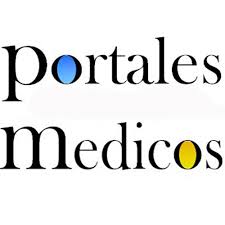Perfil de seguridad y beneficios de los fármacos antidiabéticos en cuanto al riesgo cardiovascular
Resumen
DOI: https://doi.org/10.53766/AcBio/2023.13.26.11
La diabetes tipo 2 es una enfermedad debilitante que afecta la esperanza de vida, la calidad de vida y la salud de un individuo. La enfermedad cardiovascular (ECV) es una complicación común asociada a la diabetes y una causa principal de muerte en pacientes diabéticos. Esta revisión tiene como objetivo investigar y resumir el efecto de los fármacos para la diabetes mellitus tipo 2 (DMT2) sobre los problemas de ECV. Se realizó una revisión exhaustiva de la literatura principalmente a partir de evidencia de nivel 1. Treinta y siete artículos fueron extraídos de Google Scholar, ScienceDirect, ProQuest y PubMed Database utilizando una combinación de palabras clave. Los hallazgos sugieren que se han probado diferentes agentes reductores de glucosa para determinar su eficacia y seguridad en la DMT2 con ECV. Algunos de los ensayos recientes como el "United Kingdom Prospective Diabetes Study", "Empagliflozin (EMPA) Cardiovascular (CV) Outcome Event Trial in T2DM Patients-Removing Excess Glucosae" (EMPA-REG OUTCOME), "Liraglutide Effect and Action in Diabetes: Evaluation of CV Outcome Results" y "Trial to Evaluate CV and Other Long-term Outcomes with Semaglutide in Subjects with Type 2 Diabetes" (SUSTAIN6), han arrojado luz importante sobre esta preocupación clínica vital, demostrando así un efecto convincente de liraglutida, semaglutida y EMPA en los resultados de ECV, mientras que se cree que la metformina es el agente oral óptimo de primera línea para tratar a los diabéticos tipo 2. Algunas clases de medicamentos demuestran protección CV, algunos de ellos pueden ser el resultado de un efecto de clase, y algunas diferencias pueden basarse en la población inscrita individualmente. La mayoría de los ensayos no lograron mostrar un beneficio significativo con respecto a la mortalidad y la morbilidad a pesar del control glucémico intensivo. Este estudio, por lo tanto, nos permitió desarrollar una guía de posibles medicamentos antidiabéticos que pueden influir o promover la salud CV. Los profesionales de la salud en el futuro deben sopesar el riesgo CV frente a las posibles ventajas al prescribir medicamentos antidiabéticos.
Recibido: 28/08/2023
Aprobado: 25/09/2023
Palabras clave
Texto completo:
PDFReferencias
Bahijri SM, Jambi HA, Al Raddadi RM, Ferns G, Tuomilehto J. The prevalence of diabetes and prediabetes in the adult population of Jeddah, Saudi Arabia–a community-based survey. PLoS One. 2016;11:e0152559. [PMC free article] [PubMed] [Google Scholar]
Robert AA, Al Dawish MA, Braham R, Musallam MA, Al Hayek AA, Al Kahtany NH, et al. Type 2 diabetes mellitus in saudi arabia:Major challenges and possible solutions. Curr Diabetes Rev. 2017;13:59–64. [PubMed] [Google Scholar]
WHO. Definition, Diagnosis and Classification of Diabetes Mellitus and its Complications. Dept. of Noncommunicable Disease Surveillance:WHO. 1999. [[Last accessed on 2017 Jul 30]]. Available from: http://www.apps.who.int/iris/bitstream/10665/66040/1/WHO_NCD_NCS_99.2.pdf.ucd4r4
National Institute for Health and Care Excellence. Type 2 diabetes in Adults:Management of type 2 Diabetes in Adults. 2015. [[Last accessed 0n 2017 Jul 30]]. Available from: http://www.tinyurl.com/jucd4r4
British Cardiac Society, British Hypertension Society, Diabetes UK, HEART UK, Primary
Care Cardiovascular Society, Stroke Association. et al. JBS 2:Joint british societies'guidelines on prevention of cardiovascular disease in clinical practice. Heart. 2005;91(Suppl 5):1–52. [PMC free article] [PubMed] [Google Scholar]
Al Dawish MA, Robert AA, Braham R, Al Hayek AA, Al Saeed A, Ahmed RA, et al. Diabetes mellitus in Saudi Arabia:A Review of the recent literature. Curr Diabetes Rev. 2016;12:359–68. [PubMed] [Google Scholar]
Lindström J, Peltonen M, Eriksson JG, Ilanne-Parikka P, Aunola S, Keinänen- Kiukaanniemi S, et al. Improved lifestyle and decreased diabetes risk over 13 years:Longterm follow-up of the randomised finnish diabetes prevention study (DPS) Diabetologia. 2013;56:284–93. [PubMed] [Google Scholar]
Centers for Disease Control and Prevention, National diabetes Fact Sheet:National Estimates and General Information on Diabetes and Prediabetes in the United States. 2011 [Google Scholar]
Department of Health and Human Services, Food and Drug Administration, Center for Drug Evaluation and Research, Guidance forIndustry:Diabetes Mellitus-Evaluating Cardiovascular Risk in New Antidiabetic Therapies To Treat Type 2 Diabetes. 2008. [[Last accessed on 2017 Jul 30]]. Available from:
http://www.fda.gov/downloads/Drugs/GuidanceComplianceRegulatoryInformation/Guidances/ucm071627.pdf
European Medicine Agency, Committee for Medicinal Products for Human Use, Guideline on Clinical Investigation of Medicinal Products
in the Treatment of Diabetes Mellitus. 2010. [[Last accessed on 2017 Jul 30]]. Available from: http://www.ema.europa.eu/docs/en_GB/document_library/Scientific_guideline/2010/02/WC500073570.pdf
Paneni F 2013 ESC/EASD guidelines on the management of diabetes and cardiovascular disease:Established knowledge and evidence gaps. Diab Vasc Dis Res. 2014;11:5–10. [PubMed] [Google Scholar]
Inzucchi SE, Bergenstal RM, Buse JB, Diamant M, Ferrannini E, Nauck M, et al. Management of hyperglycemia in type 2 diabetes, 2015:A patient-centered
approach:Update to a position statement of the American diabetes association and the European association for the study of diabetes. Diabetes Care. 2015;38:140–9. [PubMed] [Google Scholar]
Garrard J. Health Sciences Literature Review Made Easy. United States: Jones and Bartlett Publishers; 2016. [Google Scholar]
Siwek J, Gourlay ML, Slawson DC, Shaughnessy AF. How to write an evidencebased clinical review article. Am Fam Physician. 2002;65:251–8. [PubMed] [Google Scholar]
Dormandy JA, Charbonnel B, Eckland DJ, Erdmann E, Massi-Benedetti M, Moules IK, et al. Secondary prevention of macrovascular events in patients with type 2 diabetes in the PROactive study (PROspective pioglitAzone clinical trial in macroVascular events):A randomised controlled trial. Lancet.
;366:1279–89. [PubMed] [Google Scholar]
Yoshii H, Onuma T, Yamazaki T, Watada H, Matsuhisa M, Matsumoto M, et al. Effects of pioglitazone on macrovascular events in patients with type 2 diabetes mellitus at high risk of stroke:The PROFIT-J study. J Atheroscler Thromb. 2014;21:563–73. [PubMed] [Google Scholar]
Mahaffey KW, Hafley G, Dickerson S, Burns S, Tourt-Uhlig S, White J, et al. Results of a reevaluation of cardiovascular outcomes in the RECORD trial. Am Heart J. 2013;166:240– 90. [PubMed] [Google Scholar]
Punthakee Z, Alméras N, Després JP, Dagenais GR, Anand SS, Hunt DL, et al. Impact of rosiglitazone on body composition, hepatic fat, fatty acids, adipokines and glucose in persons with impaired fasting glucose or impaired glucose tolerance:A sub-study of the DREAM trial. Diabet Med. 2014;31:1086–92.
[PubMed] [Google Scholar]
Bach RG, Brooks MM, Lombardero M, Genuth S, Donner TW, Garber A, et al. Rosiglitazone and outcomes for patients with diabetes mellitus and coronary artery disease in the bypass angioplasty revascularization investigation 2 diabetes (BARI 2D) trial. Circulation. 2013;128:785–94. [PMC free article] [PubMed] [Google Scholar]
Lago RM, Singh PP, Nesto RW. Congestive heart failure and cardiovascular death in patients with prediabetes and type 2 diabetes
given thiazolidinediones:A meta-analysis of randomised clinical trials. Lancet. 2007;370:1129–36. [PubMed] [Google Scholar]
Liu J, Wang LN. Peroxisome proliferatoractivated receptor gamma agonists for preventing recurrent stroke and other vascular events in patients with stroke or transient ischaemic attack. Cochrane Db Syst Rev. 2014;1:CD010693. [PubMed] [Google Scholar]
Effect of Intensive Blood-Glucose Control with Metformin on Complications in Overweight Patients with Type 2 Diabetes (UKPDS 34). UK prospective diabetes study (UKPDS) group. Lancet. 1998;352:854–65. [PubMed] [Google Scholar]
Kahn SE, Haffner SM, Heise MA, Herman WH, Holman RR, Jones NP, et al. Glycemic durability of rosiglitazone, metformin, or
glyburide monotherapy. N Engl J Med. 2006;355:2427–43. [PubMed] [Google Scholar]
Basit A, Riaz M, Fawwad A. Glimepiride:Evidence-based facts, trends, and observations (GIFTS). [corrected] Vasc Health Risk Manag. 2012;8:463–72. [PMC free article] [PubMed] [Google Scholar]
Klepzig H, Kober G, Matter C, Luus H, Schneider H, Boedeker KH, et al. Sulfonylureas and ischaemic preconditioning;a double-blind,
placebo-controlled evaluation of glimepiride and glibenclamide. Eur Heart J. 1999;20:439–46. [PubMed] [Google Scholar]
Pantalone KM, Kattan MW, Yu C, Wells BJ, Arrigain S, Jain A, et al. Increase in overall mortality risk in patients with type 2 diabetes
receiving glipizide, glyburide or glimepiride monotherapy versus metformin:A retrospective analysis. Diabetes Obes Metab. 2012;14:803–9.
[PubMed] [Google Scholar]
NAVIGATOR Study Group. Holman RR, Haffner SM, McMurray JJ, Bethel MA, Holzhauer B, et al. Effect of nateglinide on the incidence of diabetes and cardiovascular events. N Engl J Med. 2010;362:1463–76. [PubMed] [Google Scholar]
Schramm TK, Gislason GH, Vaag A, Rasmussen JN, Folke F, Hansen ML, et al. Mortality and cardiovascular risk associated with different insulin secretagogues compared with metformin in type 2 diabetes, with or without a previous myocardial infarction:A nationwide study. Eur Heart J. 2011;32:1900–8. [PubMed] [Google Scholar]
ACE Acarbose Cardiovascular Evaluation Trial. [[Last accessed on 2017 Jul 30]]. Available from: http://ClinicalTrials.govidentifierNCT00829660
http://www.clinicaltrials.gov/ct2/show/NCT00829660?term=ACE+trial&rank=2
Kitano D, Chiku M, Li Y, Okumura Y, Fukamachi D, Takayama T, et al. Miglitol improves postprandial endothelial dysfunction in patients with acute coronary syndrome and new-onset postprandial hyperglycemia. Cardiovasc Diabetol. 2013;12:92. [PMC free article] [PubMed] [Google Scholar]
EXSCEL Exenatide Study of Cardiovascular Event Lowering Trial:A Trial to Evaluate Cardiovascular Outcomes After Treatment with Exenatide Once Weekly in Patients with Type 2 Diabetes Mellitus. Clinical Trials.Gov Identifiernct. [[Last accessed on 2017 Jul 30]]. Available from:
http://www.clinicaltrials.gov/ct2/show/NCT01144338
Holman RR, Bethel MA, Mentz RJ, Thompson VP, Lokhnygina Y, Buse JB, et al. Effects of once-weekly exenatide on cardiovascular outcomes in type 2 diabetes. N Engl J Med. 2017;377:1228–39. [PMC free article] [PubMed] [Google Scholar]
Marso SP, Daniels GH, Brown-Frandsen K, Kristensen P, Mann JF, Nauck MA, et al. Liraglutide and cardiovascular outcomes in type 2 diabetes. N Engl J Med. 2016;375:311–22. [PMC free article] [PubMed] [Google Scholar]
Pfeffer MA, Claggett B, Diaz R, Dickstein K, Gerstein HC, Køber LV, et al. Lixisenatide in patients with type 2 diabetes and acute coronary
syndrome. N Engl J Med. 2015;373:2247–57. [PubMed] [Google Scholar]
ClinicalTrials.gov. Effect of Albiglutide, When Added to Standard Blood Glucose Lowering Therapies, on Major Cardiovascular
Events in Subjects with Type 2 Diabetes. 2016. [[Last accessed on 2017 Aug 9]]. Available from:
https://www.clinicaltrials.gov/ct2/show/NCT02465515?term=albiglutide+cardiovascular&rank=1
ClinicalTrials.gov. Researching Cardiovascular Events with a Weekly Incretin in Diabetes (REWIND) 2016. [[Last accessed on 2017 Aug 9]]. Available from: https://www.clinicaltrials.gov/ct2/show/NCT01394952?term=dulaglutide+cardiovascular&rank=1
Marso SP, Bain SC, Consoli A, Eliaschewitz FG, Jódar E, Leiter LA, et al. Semaglutide and cardiovascular outcomes in patients with type 2 diabetes. N Engl J Med. 2016;375:1834–44. [PubMed] [Google Scholar]
Herrmann K, Zhou M, Wang A, de Bruin TWA. Cardiovascular safety assessment of pramlintide in type 2 diabetes:Results from a pooled analysis of five clinical trials. Clin Diabetes Endocrinol. 2016;2:12. [PMC free article] [PubMed] [Google Scholar]
Scirica BM, Bhatt DL, Braunwald E, Steg PG, Davidson J, Hirshberg B, et al. Saxagliptin and cardiovascular outcomes in patients with
type 2 diabetes mellitus. N Engl J Med. 2013;369:1317–26. [PubMed] [Google Scholar]
Green JB, Bethel MA, Armstrong PW, Buse JB, Engel SS, Garg J, et al. Effect of sitagliptin on cardiovascular outcomes in type 2 diabetes.
N Engl J Med. 2015;373:232–42. [PubMed] [Google Scholar]
ClinicalTrials.gov, Cardiovascular and Renal Microvascular Outcome Study With Linagliptin in Patients With Type 2 Diabetes
Mellitus (CARMELINA). NCT01897532. 2013. [[Last accessed on 2017 Aug 9]]. Available from: https://www.clinicaltrials.gov/ct2/show/NCT01897532?term=CARMELINA&rank=1
White WB, Cannon CP, Heller SR, Nissen SE, Bergenstal RM, Bakris GL, et al. Alogliptin after acute coronary syndrome in patients with
type 2 diabetes. N Engl J Med. 2013;369:1327–35. [PubMed] [Google Scholar]
FDA. FDA Drug Safety Communication:FDA Adds Warnings About Heart Failure Risk to Labels of Type 2 Diabetes Medicines Containing Saxagliptin and
Alogliptin, U.S. Food and Drug Administration. 2017. [[Last accessed on 2017 Aug 9]]. Available from: https://www.fda.gov/Drugs/DrugSafety/ucm4?6.htm
ORIGIN Trial Investigators. Gerstein HC, Bosch J, Dagenais GR, Díaz R, Jung H, et al. Basal insulin and cardiovascular and other outcomes in dysglycemia. N Engl J Med. 2012;367:319–28. [PubMed] [Google Scholar]
ORIGIN Trial Investigators. Cardiovascular and other outcomes postintervention with insulin glargine and omega-3 fatty acids (ORIGINALE) Diabetes Care. 2016;39:709–16. [PubMed] [Google Scholar]
Haas B, Eckstein N, Pfeifer V, Mayer P, Hass MD. Efficacy, safety and regulatory status of SGLT2 inhibitors:Focus on canagliflozin.
Nutr Diabetes. 2014;4:e143. [PMC free article] [PubMed] [Google Scholar]
FDA. Canagliflozin (Invokana®, Invokanamet®):Drug Safety Communication–Clinical Trial Results Find Increased risk Of Leg and Foot Amputations. [[Last accessed on 2017 Jul 30]]. Available from: http://www.fda.gov/Drugs/DrugSafety/ucm500965.htm
Neal B, Perkovic V, Mahaffey KW, de Zeeuw D, Fulcher G, Erondu N, et al. Canagliflozin and cardiovascular and renal events in type 2 diabetes. N Engl J Med. 2017;377:644–57. [PubMed] [Google Scholar]
Bailey CJ. Interpreting adverse signals in diabetes drug development programs. Diabetes Care. 2013;36:2098–106. [PMC free article]
[PubMed] [Google Scholar]
Zinman B, Wanner C, Lachin JM, Fitchett D, Bluhmki E, Hantel S, et al. Empagliflozin, cardiovascular outcomes, and mortality in type
diabetes. N Engl J Med. 2015;373:2117–28. [PubMed] [Google Scholar]
Home PD, Pocock SJ, Beck-Nielsen H, Curtis PS, Gomis R, Hanefeld M, et al. Rosiglitazone evaluated for cardiovascular outcomes in oral agent combination therapy for type 2 diabetes (RECORD):A multicentre, randomised, open-label trial. Lancet. 2009;373:2125–35. [PubMed] [Google
Scholar]
Nissen SE, Wolski K. Effect of rosiglitazone on the risk of myocardial infarction and death from cardiovascular causes. N Engl J Med. 2007;356:2457–71. [PubMed] [Google Scholar]
Batchuluun B, Sonoda N, Takayanagi R, Inoguchi T. The cardiovascular effects of metformin:Conventional and new insights. J Endocrinol Diabetes Obes. 2014;2:1035. [Google Scholar]
Frier BM, Schernthaner G, Heller SR. Hypoglycemia and cardiovascular risks. Diabetes Care. 2011;34(Suppl 2):S132–7. [PMC free article] [PubMed] [Google Scholar]
Derosa G, Mugellini A, Ciccarelli L, Crescenzi G, Fogari R. Comparison of glycaemic control and cardiovascular risk profile inpatients with type2 diabetes during treatment with either repaglinide or metformin. Diabetes Res Clin Pract. 2003;60:161–9. [PubMed] [Google Scholar]
Holman RR, Coleman RL, Chan JCN, Chiasson JL, Feng H, Ge J, et al. Effects of acarbose on cardiovascular and diabetes outcomes in patients with coronary heart disease and impaired glucose tolerance (ACE):A randomised, double-blind, placebocontrolled trial. Lancet Diabetes Endocrinol.
;5:877–86. [PubMed] [Google Scholar]
Seufert J, Gallwitz B. The extra-pancreatic effects of GLP-1 receptor agonists:A focus on the cardiovascular, gastrointestinal and central nervous systems. Diabetes Obes Metab. 2014;16:673–88. [PubMed] [Google Scholar]
Ryan D, Acosta A. GLP-1 receptor agonists:Nonglycemic clinical effects in weight loss and beyond. Obesity (Silver Spring) 2015;23:1119–29. [PMC free article] [PubMed] [Google Scholar]
[[Last accessed on 2017 Jul 30]];FDA. FDA Drug Safety Communication:FDA Adds Warnings About Heart Failure Risk to Labels of ype 2 Diabetes Medicines Containing Saxagliptin and Alogliptin, U.S. Food and Drug Administration. 2017 Available from: https://www.fda.gov/Drugs/DrugSafety/ucm4?6.htm . [Google Scholar]
Muis MJ, Bots ML, Grobbee DE, Stolk RP. Insulin treatment and cardiovascular disease;friend or foe?A point of view. Diabet Med. 2005;22:118–26. [PubMed] [Google Scholar]
Valentine V. The Role of the kidney and sodium-glucose cotransporter-2 inhibition in diabetes management. Clin Diabetes. 2012;30:151–5. [Google Scholar]
Food and Drug Administration. Guidance for Industry:Diabetes Mellitus—Evaluating Cardiovascular Risk in New Antidiabetic Therapies to Treat Type 2 Diabetes. 2008. [[Last accessed on 2017 Jul 30]]. Available from: http://www.tinyurl.com/z9yyoj5
European Medicines Agency. SGLT2 inhibitors. 2016. [[Last accessed on 2017 Jul 30]]. Available from: http://www.tinyurl.com/hr2rq82
DOI: https://www.doi.org/10.53766/AcBio/Se encuentra actualmente indizada en: | |||
 |  |  | |
  |  |  |  |
 |  |  |  |
 |  |  | |
![]()
Todos los documentos publicados en esta revista se distribuyen bajo una
Licencia Creative Commons Atribución -No Comercial- Compartir Igual 4.0 Internacional.
Por lo que el envío, procesamiento y publicación de artículos en la revista es totalmente gratuito.




